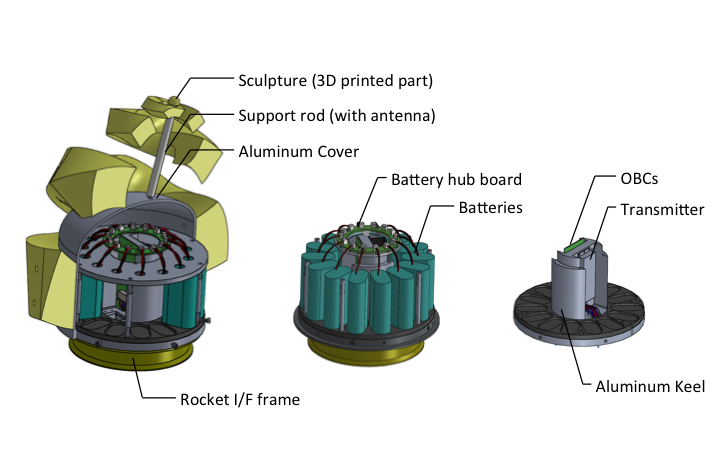
The first 3D printed satellite in history, the ARTSAT was both a sculpture and a space vehicle, and it was a project launched by a collaborative initiative between Tama Art University and the University of Tokyo.
Made up of two groups, the satellite manufacturing engineering group and a satellite utilization art group, the Japanese team say they wanted to “help build a society where satellites and the universe are familiar in our daily lives.”
“Although satellites are usually invisible, they silently orbit the earth at ultra-high speed, transmitting various data,” says Professor Akihiro Kubota of Tama Art University. “The art satellite has no specific mission such as scientific exploration or engineering demonstration. We hope to introduce an awareness of satellites and the universe into our lives. This will be achieved by creating media art works, for example, that appeal to human perception and sensation using familiar data transmitted from the satellite such as temperature, brightness, and attitude. Another example is the design of everyday products and applications such as furniture and accessories linked to the satellite’s motion, status, and environment.”
According to Kubota, the project had an artistic mission to create a “deep-space sculpture” and create “generative poetry” while transmitting that poetry back to Earth. It was also meant to “test the use of 3D printed parts for spacecraft,” and it succeeded on both counts.
Kubota says the sculpture’s 3D printed design took into account structural, thermal, and electromagnetic characteristics to perform on-board verification of the effectiveness of its 3D printed parts and instruments. He adds that the project will gather information about design methodologies of space instruments and manufacturing techniques.
Some of the key specialists participating in this project came from Nishi Musen Kenkyuusho Co., Ltd. and Yuki Precision Co., Ltd.; the device was 3D printed by the SOLIZE Corporation.
Calling the satellite a “sculptural object in deep space” and an “artificial asteroid sailing through the void eternally,” Kubota says he hopes the object “will live on in people’s memories and imaginations.”
What do you think of ARTSAT? Let us know in the 3D Printed Satellite forum thread on 3DPB.com.